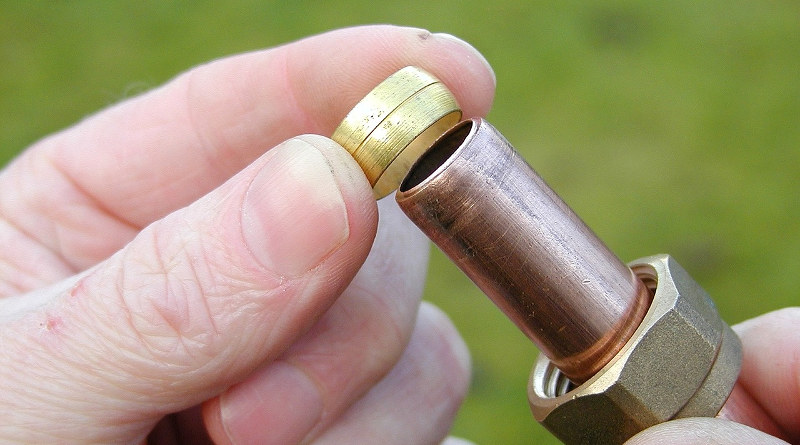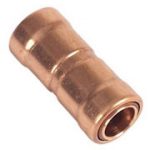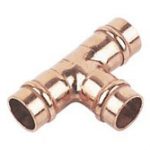Repairs to the plumbing in a house is one of the most common DIY tasks undertaken, and so learning about the different types of plumbing joint available makes great sense.
If you are making any alterations or repairs to either copper or plastic plumbing pipes, you will probably need to connect two or more sections of pipe at some point.
There are several different joint options available to you and most are available as elbow joints, tee joints and threaded joints, as well as straight coupling joints. Which you choose will depend on both the situation and your level of skill or confidence.
Types of Plumbing Joint
Plastic Push-fit Joint
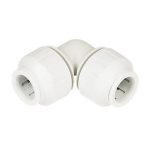 This type of joint features a toothed ring to grip the pipe and a rubber O-ring to create the seal. The end of the copper (or plastic) pipe is pushed into the joint until it hits the internal stop in the middle. The joint can be pulled apart by pushing the ring against the joint and slowly pulling to pipe out.
This type of joint features a toothed ring to grip the pipe and a rubber O-ring to create the seal. The end of the copper (or plastic) pipe is pushed into the joint until it hits the internal stop in the middle. The joint can be pulled apart by pushing the ring against the joint and slowly pulling to pipe out.
Push-fit joints are very quick, easy and reliable to use, but cannot be used for all applications (such as connecting directly to a boiler).
Copper Push-fit Joint
The copper push-fit joint is much the same as the plastic version, but as it is made of copper you retain earth continuity along the pipe.
The pipe end slots into the joint until it hits the internal stop and a o-ring creates a watertight seal.
Copper push-fit joints are more expensive than the plastic type, but worth it if you want a quick fix.
Compression Joint
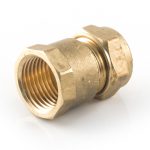 A compression joint features a soft metal ring, called an olive, inside the joint and a nut on the outside. When the pipe end is pushed into the joint and the nut is tightened, the olive is compressed and forms a seal around the pipe.
A compression joint features a soft metal ring, called an olive, inside the joint and a nut on the outside. When the pipe end is pushed into the joint and the nut is tightened, the olive is compressed and forms a seal around the pipe.
Compression joints are most often used with copper pipe, but they can be used to join plastic pipes if a metal insert is used to stop the olive crushing the pipe walls.
You can buy olives individually meaning that compression joints can be dismantled and used again.
Capillary Joints
Capillary joints feature no internal rubber seal or gripping ring, and instead are sealed by soldering around the end of the joint with the pipe pushed inside. There are two main types of capillary joint:
Solder-ring Joint
This type of capillary joint has a ring of solder inside each end. The pipe is pushed into the joint and the ends are heated with a blowtorch, melting the solder and sealing the joint.
This type of joint is generally easier to use than a End-Feed joint as it reduces the risk of leaving gaps in the solder because the rings ensures that the solder is evenly distributed around the pipe.
End-feed Joint
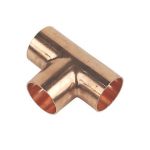 The most simple type of capillary joint, and the one which needs the most care when using. An end-feed joint does not feature any pre-inserted solder, so you will need to apply solder wire to the end of the joint as the pipe is heated.
The most simple type of capillary joint, and the one which needs the most care when using. An end-feed joint does not feature any pre-inserted solder, so you will need to apply solder wire to the end of the joint as the pipe is heated.
Capillary action then draws the soldier inside the joint and creates a seal. As with a solder-ring joint, can only be used with copper pipes (for obvious reasons).
Hep2o Joint
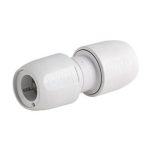 Hep2o joints are similar to compression joints, but designed specifically for use with polybutylene pipes (although they can be used on copper pipes).
Hep2o joints are similar to compression joints, but designed specifically for use with polybutylene pipes (although they can be used on copper pipes).
The pipe is pushed into the end of the joint and the cap nut is tightened, compressing the internal grab ring. Hep2o joints can be reused, but you need a special tool to release and remove the grab ring.
Supplied with a pipe insert to protect the walls of polyethylene pipes. Expensive and more bulky than other types of joint.

